In the first months of life, we are necessarily in the midst of a small circle of relatives and friends. Throughout history (and presumably pre-history) most of us have remained within those confines. But it is possible to broaden one’s circle—and to be involved, for better or worse, with a much larger world.
In the original Good Work Project, we developed the concept and image of Rings of Responsibility. The basic idea: As we grow and venture forth from home, we can begin to relate to larger entities and groups—to our neighborhood, our school, our community, our workplace. Ultimately, we may relate to the nation, the region, the wider world—indeed to the whole earth. As researchers seeking to understand good work, our focus was on positive relations to this ever wider set of concentric circles. But, of course, there can be less positive relations as well—one can carry out compromised or patently bad work in these several widening circles of responsibility.
Of late, I’ve been contemplating the lives of individuals who have chosen to exert responsibility with respect to the outer circles: individual who have attained powerful leadership roles in government (or other sectors), as well as individuals who have chosen to address issues of global significance—climate change, nuclear arms control, a pandemic.
For the most part, we should probably assume a default sequence of events unfolding over the course of a lifetime. That is, we should assume that even powerful leaders began with relatively small spheres of responsibility and gradually expanded to regional, national, or even global spheres of influence. Perhaps the most familiar example comes from the life of Abraham Lincoln: born with modest means in the legendary log cabin, and gradually working his way westward to Illinois and to local politics, and then eastward to the White House and national (and to some extent) international relations.
Whatever the validity of this default assumption—which accords with common sense—it is instructive to consider cases which apparently violate the canonical sequence of rings. Recently, I’ve considered the unusual sequence of events surrounding the rise of John F. Kennedy to become the youngest elected president in American History. Kennedy was the offspring of parents who were worldly: his maternal grandfather was the mayor of Boston and a major political figure in the Democratic party. His father, also from an influential family in the Boston area, became a major business, financial, and government figure, with international as well as national credentials. While still a youth, John Kennedy had the rare opportunity to meet with American presidents, British royalty, and the Pope—and so it was natural for him (and his siblings) at an early age to feel a relationship to, and perhaps a responsibility for, individuals who lived well beyond the neighborhood. A similar story could be told about British Prime Minister Winston Churchill (much admired by the young Kennedy), whose family was part of an international “jet set” before that phrase had been coined. Here, we behold a textbook contrast to the Lincoln saga.
Enter President Barack Obama, who has recently authored a fascinating account of his early life and the first years of his presidency in his A Promised Land. On one imaginable account, Obama would seem to have been a textbook case of someone who had to work his way over the decades through the rings of responsibility—culminating at the height of his career in nomination and election for the Presidency. And yet, as I connect the dots, Obama’s case is as similar to Kennedy’s as it is to Lincoln’s. Moreover, it may exhibit some of the same deficiencies as well as the same assets.
Of course, it’s only one case, but it can stimulate hypotheses that could be tested.
Several aspects of Obama’s background are rare in U.S. presidential biographies:
Absence of a father: While his father was alive during the first years of the future president’s life, young Barack essentially never knew his father. Accordingly, he was free of any constraints that the father might have imposed on him while also being able to imagine him as he wished him to be. Other figures in history without father figures have described both the freedom and the burden of this familial constellation.
A mother with a career of her own: Most American’s presidents have had powerful and influential mothers, perhaps more often than they have had potent father figures. But Stanley Ann Dunham was unusual in that she was a working anthropologist, who traveled, taught, advised, wrote and juggled. Much of Barack’s childrearing was presided over by his maternal grandparents, two attractive figures.
International travel: Though of modest means, young Barack had the opportunity to travel—notably to Indonesia, where he lived for awhile as a child. He also travelled around the US and lived for years in Hawaii, to which his grandparents had retired.
Bi-racial parentage: Obama was able to move within and across groups but perhaps never felt like he belonged to either group—the delineation and scope of the ring was unclear.
Clearly very gifted and with an attractive personality, Obama had the usual uncertainties about career and life choices. As he reflects in the memoir:
I understood the absurdity of my vision, how wide the gap was between my grand ambitions and anything that I was actually doing in my life. I was like a young Walter Mitty, a Don Quixote with no Sancho Panza…my preference for navel gazing over action.
But once he had decided to go into electoral politics, his rise was meteoric—at least as swift as John Kennedy’s—and perhaps swifter. Kennedy was elected to the U.S. House of Representatives in 1946 and to the presidency in 1960. Obama was elected to the Illinois Senate in 1997, the United States Senate in 2004, and the Presidency in 2008.
I am content to leave it to historians to judge the success of the Obama presidency. But his recent memoir reveals what was long suspected: that he gladly grasped for the wider rings of responsibility, but (like future President John Kennedy), he was not particularly interested in or adept at the intermediate rings.
Evidence:
A state senator wasn’t a glamorous post…on the other hand I had start somewhere and pay my dues…Also the Illinois state legislature was in session only a few weeks out of the year.
His election to the US Senate was triumphal and tremendously important. But in the Senate, which proceeds so much by seniority, it would ordinarily have taken decades for Obama to reach a position of power and influence.
Instead, almost from the time of his election—even more than John Kennedy, who had been interested in the Vice presidency in 1956—Obama was talked about as a future presidential candidate. He was an immediate media sensation at a time when media was extraordinarily powerful and influential. And when Senate majority leader Harry Reid told Obama that he was a strong potential candidate, and that powerful Senator Charles Schumer concurred, Obama ceased active involvement in senatorial affairs and began to run the presidency. We might contend that he catapulted from being an Illinois representative directly to being a presidential candidate.
Once elected president, Obama moved easily and readily into being a global figure. In his first year in office he gave a historic speech in Egypt to the Muslim world; he won the Nobel Prize for Peace; he travelled around the globe and had reasonably effective relations with the gamut of world’s leaders.
But at home there was much essential work to do—to repair the economy after the fiscal crisis of 2007-2008; to make health care available and affordable; and to attempt other national initiatives, ranging from higher wages to better highways.
Obama had good ideas, capable advisers, and the ability to speak knowledgeably in many forums.
But like his predecessor, John Kennedy, Obama did not like the wheeling and dealing that is required if one is pass legislation in a government composed of three equal branches. Put sharply: he did not fully understand that making law was, in Bismarck’s immortal analogy, like “making sausage.” One had to be willing to speak to everyone tirelessly, and to make compromises widely and predictably, if one wants to get legislation passed.
Consider Obama’s own reflections. To get TARP relief, he had, to his own distaste, bargain with four senators—Collins and Snowe from Maine, Nelson from Nebraska, and Specter from Pennsylvania.
None of these senators were shy about charging a hefty toll… even as their priorities added billions, the group insisted that the overall bill had to come in under $600 billions, because any figure higher than that just seemed too much …some went so far as to suggest that I barnstorm against Snowe, Collins, Specter, and Nelson in their home states…I told them this wouldn’t happen.
To be sure: it is not essential that the President always get involved in the making of political sausage. If you have a supermajority, it’s not necessary. If you have Lyndon Johnson as your vice president (which JFK did), you have someone who can not only bargain with the opposite party, but who actually enjoys the give-and-take. Or, if you do not like the bargaining with individual legislators yourself, you can form a relationship to the leader of the opposition—which is what Republican Ronald Reagan did with “Tip” O’Neill, a fellow Irishmen and the Speaker of the House of Representatives.
And whatever you do, don’t make fun of the leader of the Opposition—which is what President Obama did at the 2013 White House Correspondents meeting, where he quipped, “Would YOU like to have a drink with Mitch McConnell?”
On reflection, Obama came to realize what he may have lacked:
FDR would never have made such mistakes…He’d known that in a crisis people need a story that makes sense to their hardships and spoke to their reactions… a morality tale with clear good guys and bad guys and a plot they could easily follow… governance could not be so antiseptic that it set aside the basic stuff of politics: you had to sell your program, reward supporters, punch back against opponents, and amplify the facts that helped your cause while fudging the details that didn’t… whether trapped in my own high-mindedness, I’d failed to tell the American people a story they could believe in, and whether, having ceded the political narrative to my critics, I was going to be able to wrest it back.
So much for Barack Obama—and the costs for not having navigated mid-level rings of responsibility.
What about his successor?
Donald Trump was elected as essentially a political novice. It’s difficult to think of any president who arrived in the White House with so little experience in the give-and-take of electoral politics—the closest examples would be those Presidents who had previously been generals—Eisenhower, Grant, Taylor, Jackson come to mind. And so, Trump had to improvise his mode of dealing with legislation.
Essentially he didn’t. Instead, he dealt directly with his fans and public—those to whom he tweeted, or spoke directly through Fox News and Talk Radio.
If he felt responsible to anyone beside himself, it would have been to these constituents.
And so it is worth asking about his own family background. Unlike that of most other presidents, Trump’s relationship with his mother is clouded in mystery. Our only clues come from the memoir of niece Mary Trump. On the memoirist’s account, Trump’s mother was distant and ill—her relation to her five children is unknown. Donald Trump was essentially raised by—or at least imprinted on—a self-made millionaire who was extremely tough-minded and who skirted the law for most of his life. One might say that Fred Trump went through the rings of irresponsibility and that his son followed his examples. But this is not the occasion for further speculation.
© Howard Gardner 2021






